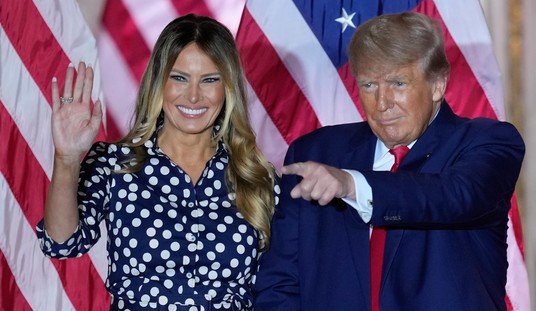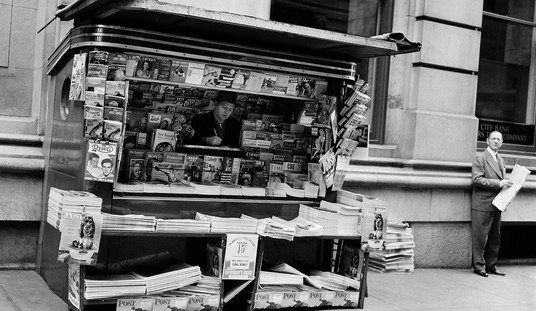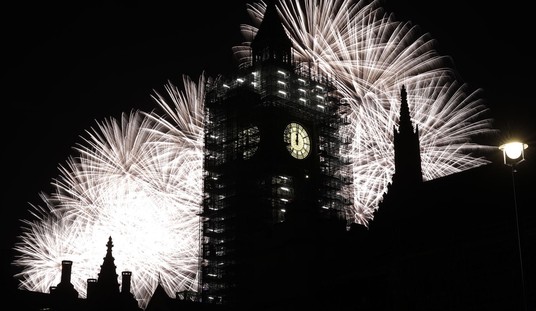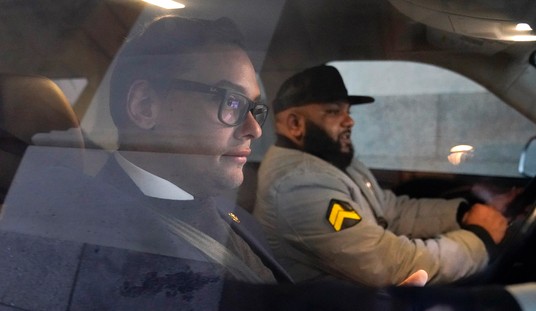In 2009, President Obama publicly revealed damning evidence of a secret Iranian uranium enrichment facility at Fordow, “the size and configuration” of which were “inconsistent with” a peaceful nuclear program. This development was “not the first time” Iran had cheated and defied international obligations, he said; indeed, the massive, heavily-fortified, underground, blast-proof enrichment bunker represented an egregious violation of the Nuclear Non-Proliferation Treaty (NPT), to which Iran was (and is) a signatory. Then-British Prime Minister Gordon Brown added several notes of condemnation after Obama spoke, slamming “the level of deception by the Iranian government and the scale of what we believe is the breach of international commitments.” Iran’s actions, Brown intoned, would “shock and anger” the international community:
In the years-long aftermath of this revelation, UN resolutions were passed, and a tough sanctions regime (opposed by Obama at the time) was imposed. Buckling under the resulting squeeze, Iran was effectively forced to the bargaining table in 2012, touching off a long slog of frustrating talks, extended through multiple deadlines — as Iran cheated, “accidentally” and otherwise. This process culminated in last week’s announcement of a general framework of a deal, final details of which are to be hammered out in writing by the end of June. A State Department fact sheet lays out some of the key parameters of the would-be accord — prompting Iranian officials to seemingly call the document’s accuracy into question, dismissing it as spin, and emphasizing that their regime is under no obligations yet. Regardless of where talks head in the coming months, Iran’s rogue Fordow site will no doubt feature heavily in skeptics’ critiques of the bargain. The New York Times reports that many experts had assumed that Fordow, a symbol of Iran’s noncompliance and malicious intentions, would be dismantled under any agreement. The facility will instead remain intact, supposedly as an academic nuclear research location:
The Nonproliferation Treaty allows no secret work that could have application to the making of nuclear warheads. But inspectors from the International Atomic Energy Agency soon discovered that the Iranians planned to fill the cavernous halls with row upon row of centrifuges — tall machines that spin very fast to concentrate the rare form of uranium that fuels reactors and bombs. By late 2011, Iran had installed hundreds of centrifuges at Fordo and had begun enriching uranium to 20 percent, just shy of bomb purity. By 2012, the number of centrifuges at the underground plant had soared to more than 2,700, though only 696 were in use. The deep site represented a bold move in Iran’s war of nerves with the West. So much rock covered the enrichment halls that they could withstand all but the most powerful bombs. And Tehran, whenever it wanted, could throw another 2,000 centrifuges into enrichment…Many nuclear experts and American officials expected that the negotiations would end with Fordo’s complete dismantlement. David Albright, the president of the Institute for Science and International Security, a Washington research group that monitors Iran’s nuclear program, wrote early last year that “a key demand will be that this site close down.”
But the preliminary deal announced in Switzerland on Thursday instead calls for the site’s conversion exclusively to peaceful research. Iran has agreed to forgo enriching uranium at Fordo for at least 15 years, and to conduct no research there on new enrichment gear. The proposed deal also calls for the removal of “almost two-thirds of Fordo’s centrifuges and infrastructure.” R. Scott Kemp, a centrifuge expert at M.I.T. who formerly worked at the State Department and Princeton, hailed the overall deal as “a remarkable achievement” but said Fordo could be a spoiler. Since the deal allows the retention of roughly 1,000 centrifuges in the site’s underground halls, and says nothing about forbidding the installation of highly advanced ones so long as they do no uranium enrichment, the site might eventually pose a danger, Dr. Kemp argued on the website of the M.I.T. Laboratory for Nuclear Security and Policy. He said Fordo thus configured might enable Iran to acquire the fuel for a bomb in as little as three months; the Obama administration has sought to lengthen the so-called breakout time to at least one year.
Hundreds of Fordow’s centrifuges will remain in operation, and will be permitted to resume uranium enrichment after 15 years. Also, those hundreds of “removed” centrifuges won’t be destroyed. They’ll be held off site by international watchdogs for a number of years, after which Iran can reinstall them. Even a top cheerleader for Obama’s “achievement” is concerned that powerful, advanced centrifuges could be legally installed at Fordow by the Iranians, with eye towards running out the clock on restrictions. The Obama administration has evidently affirmed (page 2) Iran’s ability to engage in “limited research and development” of more sophisticated centrifuges under the terms of the pact. These concessions are among the more eye-opening allowances surrendered by the West; they represent stark departures from President Obama’s previous demands, as stated in 2012 (“end their nuclear program”) and 2013:
“They don’t need to have an underground, fortified facility like Fordow in order to have a peaceful nuclear program. They certainly don’t need a heavy-water reactor at Arak in order to have a peaceful nuclear program. They don’t need some of the advanced centrifuges that they currently possess…”
Meanwhile, Israeli Prime Minister Benjamin Netanyahu is warning anyone who will listen that the proposed outline foretells a “very bad deal” that threatens Israel’s existence. The Obama administration, meanwhile, explicitly views Iran’s anti-Semitic genocidal actions and rhetoric as unrelated to negotiations over the regime’s nuclear program:
A State Department official dismissed a plea Friday from Israeli Prime Minister Benjamin Netanyahu that the Iran nuclear agreement include clear recognition of his nation’s “right to exist,” declaring negotiations are “only about the nuclear issue.” State Department spokeswoman Marie Harf, in a terse response to a question about Netanyahu’s concerns, told reporters, “This is an agreement that is only about the nuclear issue” — a comment that indicates the Obama administration is not looking to enshrine Israel’s security into a final agreement.
One suspects Israel sees a rather important connection between Iranian nukes and its repeated vows to annihilate the Jewish state. Also unaddressed in the potential deal are Iran’s illicit long-range missile program, its destructive regional meddling, its leading sponsorship of global terrorism, and its appalling human rights violations. I’ll leave you with this video from American Legacy PAC. Stayed tuned for the (melodramatic? accurate?) Neville Chamberlain/Obama face morph:








Join the conversation as a VIP Member